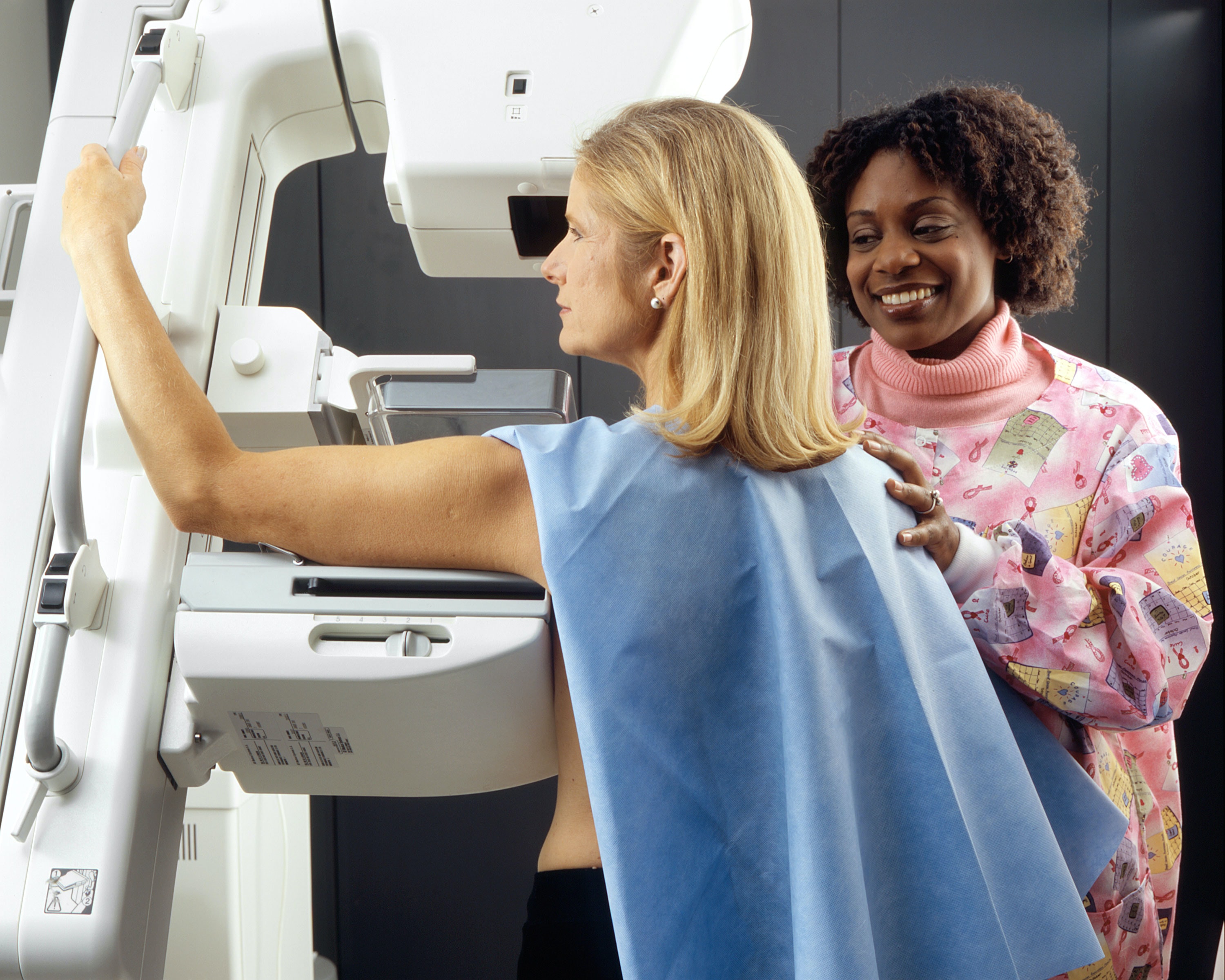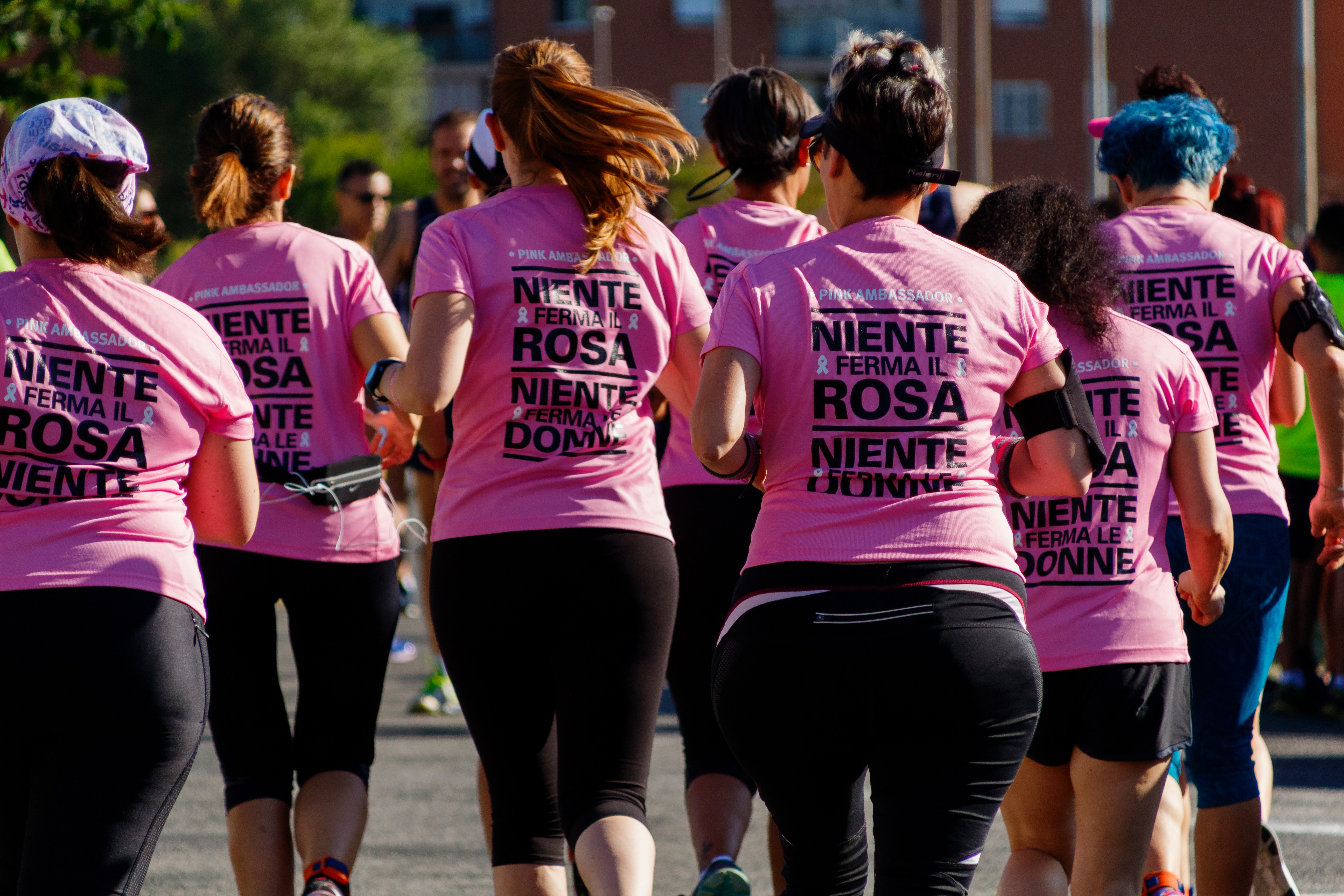.webp?width=795&height=596&name=emma-matthews-digital-content-production-yWPi5Iaiohw-unsplash%20(1).webp) Breast Cancer Awareness Month is annually in October, with the intention of educating and fighting together to bring awareness.
Breast Cancer Awareness Month is annually in October, with the intention of educating and fighting together to bring awareness.
Most of us know someone; either a friend, family member, or acquaintance, that has had to battle cancer. By spreading awareness, we can help to educate others on the importance of mammogram (x-ray of the breast) screenings.
Let’s first discuss the signs of breast cancer, although sometimes there aren’t any.
According to the American Cancer Society, when breast cancer is detected early, the survival rate is about 99%. That is encouraging news!
So what are the symptoms?
- Any change in the size or the shape of the breast.
- Pain in any area of the breast - Although most of the time pain is not a detector of breast cancer, but accompanied by other symptoms, it should not be ignored.
- Nipple discharge other than breast milk (including blood).
- A new lump in the breast or underarm - The two most common causes of breast lumps are fibrocystic breast condition and noncancerous cysts. Fibrocystic condition causes noncancerous changes in the breast that can make them lumpy, tender, and sore.
How often should you get a mammogram?
According to the American Cancer Society, screening for women at average breast cancer risk are as follows:
- Women ages 40 to 44 have the choice to start annual breast cancer screening with a mammogram if they wish to do so.
- Women age 45 to 54 should get yearly mammograms.
- Women 55 and older can switch to a mammogram every other year or may continue yearly screening.
How is breast cancer diagnosed?
There are a few different tests that may be performed.
- Breast Ultrasound. A machine that uses sound waves to make detailed pictures, called sonograms, of areas inside the breast.
- Diagnostic Mammogram. If you have a problem in your breast, such as lumps, or if an area of the breast looks abnormal on a screening mammogram, doctors may have you get a diagnostic mammogram. This is a more detailed x-ray of the breast.
- Biopsy. This is a test that removes tissue or fluid from the breast to be looked at under a microscope for more testing. There are different kinds of biopsies (e.g., fine-needle aspiration, core biopsy, or open biopsy).
- Magnetic Resonance Imaging (MRI). A kind of body scan that uses a magnet linked to a computer. The MRI scan will make detailed pictures of areas inside the breast.
If you have any signs that cause worry, see your doctor right away. Don’t simply ignore them because there has been no history of cancer in your family. Talk to your doctor about your risks and ask how and when you should do self-exams, which will help you identify abnormalities in the future.

Healthy habits that can help reduce your risk of breast cancer.
- Maintain a healthy weight
- Stay physically active
- Eat fruits and vegetables
- Do not smoke
- Limit alcohol consumption
- Contraceptives - check with your doctor about the risks.

With Impact, unlike most other Healthcare Sharing Organizations, mammogram screenings have no extra cost.
How can you bring awareness?
- Share this blog.
- Join a Breast Cancer walk in your area to raise awareness and money for additional research.
- Become an advocate.
For more ways to help, visit this website.
Impact Works Better, Feels Better than insurance. If you have any questions, give us a call at 855-378-6777, or go online and chat with a Member Support Specialist.

